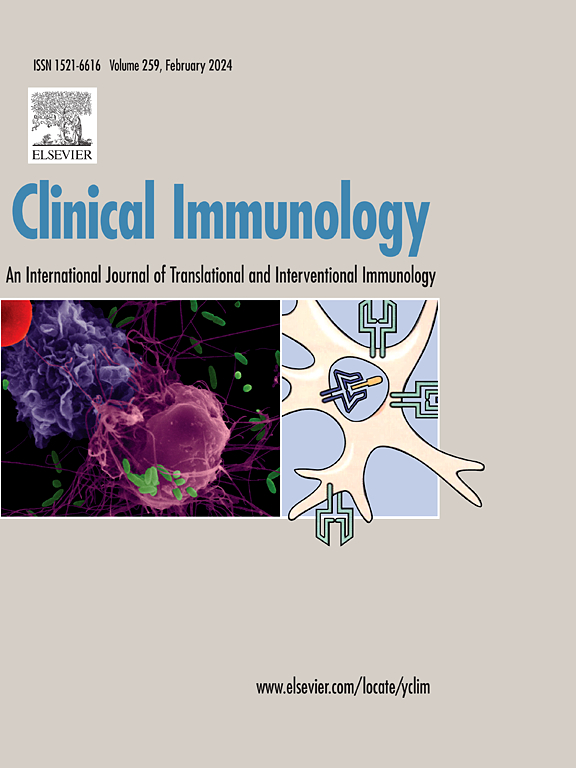Primary immunodeficiency diseases, inflammation and mitochondrial dysfunction
IF 3.8
3区 医学
Q2 IMMUNOLOGY
引用次数: 0
Abstract
Primary immunodeficiency diseases (PIDs) are a heterogeneous group of inherited disorders characterized by impaired immune function, leading to increased susceptibility to infections, autoimmunity, and malignancies. While traditionally defined by immune cell defects, emerging evidence highlights the critical role of inflammation in PID pathogenesis. This review explores the intricate relationship between mitochondrial dysfunction and inflammation in PIDs. We examine how genetic defects in PIDs disrupt immune homeostasis, promoting pro-inflammatory states through cytokine dysregulation. Additionally, we discuss the vicious cycle involving oxidative stress, mitochondrial dysfunction, and inflammation, emphasizing the contribution of mitochondrial ROS production, mtDNA damage, and inflammasome activation in sustaining chronic inflammation. Furthermore, we propose that impaired mitochondrial function —potentially through mechanisms involving calcium signalling, ATP synthase regulation, and mitochondrial permeability transition pore formation — may serve as a central link between immune deficiency and hyperinflammation in PIDs. Understanding these complex interactions may provide new insights into the pathogenesis of PIDs and open avenues for targeted therapeutic strategies to improve patient outcomes.
原发性免疫缺陷疾病,炎症和线粒体功能障碍。
原发性免疫缺陷疾病(pid)是一种异质性的遗传性疾病,其特征是免疫功能受损,导致对感染、自身免疫和恶性肿瘤的易感性增加。虽然传统上由免疫细胞缺陷定义,但新的证据强调了炎症在PID发病机制中的关键作用。本文综述了线粒体功能障碍与炎症之间的复杂关系。我们研究了PIDs中的遗传缺陷如何破坏免疫稳态,通过细胞因子失调促进促炎状态。此外,我们讨论了氧化应激、线粒体功能障碍和炎症的恶性循环,强调了线粒体ROS产生、mtDNA损伤和炎症小体激活在维持慢性炎症中的作用。此外,我们提出线粒体功能受损-可能通过涉及钙信号,ATP合成酶调节和线粒体通透性过渡孔形成的机制-可能是免疫缺陷和PIDs高炎症之间的中心联系。了解这些复杂的相互作用可能为PIDs的发病机制提供新的见解,并为有针对性的治疗策略开辟道路,以改善患者的预后。
本文章由计算机程序翻译,如有差异,请以英文原文为准。
求助全文
约1分钟内获得全文
求助全文
来源期刊

Clinical immunology
医学-免疫学
CiteScore
12.30
自引率
1.20%
发文量
212
审稿时长
34 days
期刊介绍:
Clinical Immunology publishes original research delving into the molecular and cellular foundations of immunological diseases. Additionally, the journal includes reviews covering timely subjects in basic immunology, along with case reports and letters to the editor.
 求助内容:
求助内容: 应助结果提醒方式:
应助结果提醒方式:


